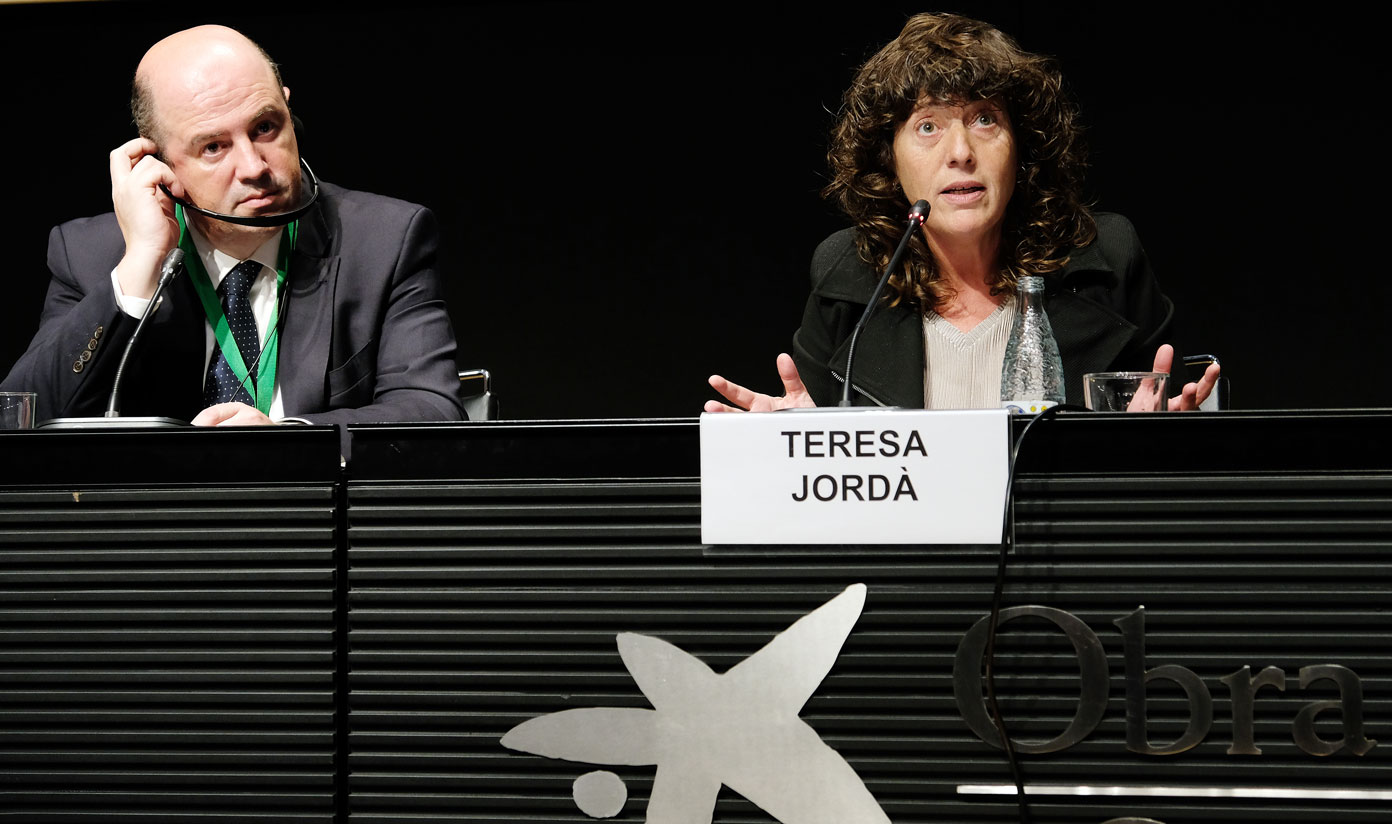

Antoni Trasobares, director of the Forest Science and Technology Centre of Catalonia and Chairman of this session, underlined the importance of the recent publication of the European Bioeconomy Strategy and the current development of measures to implement the Common Agricultural Policy for the period 2020-2027 as first steps for the future implementation of bioeconomy strategies in Europe for the next years.
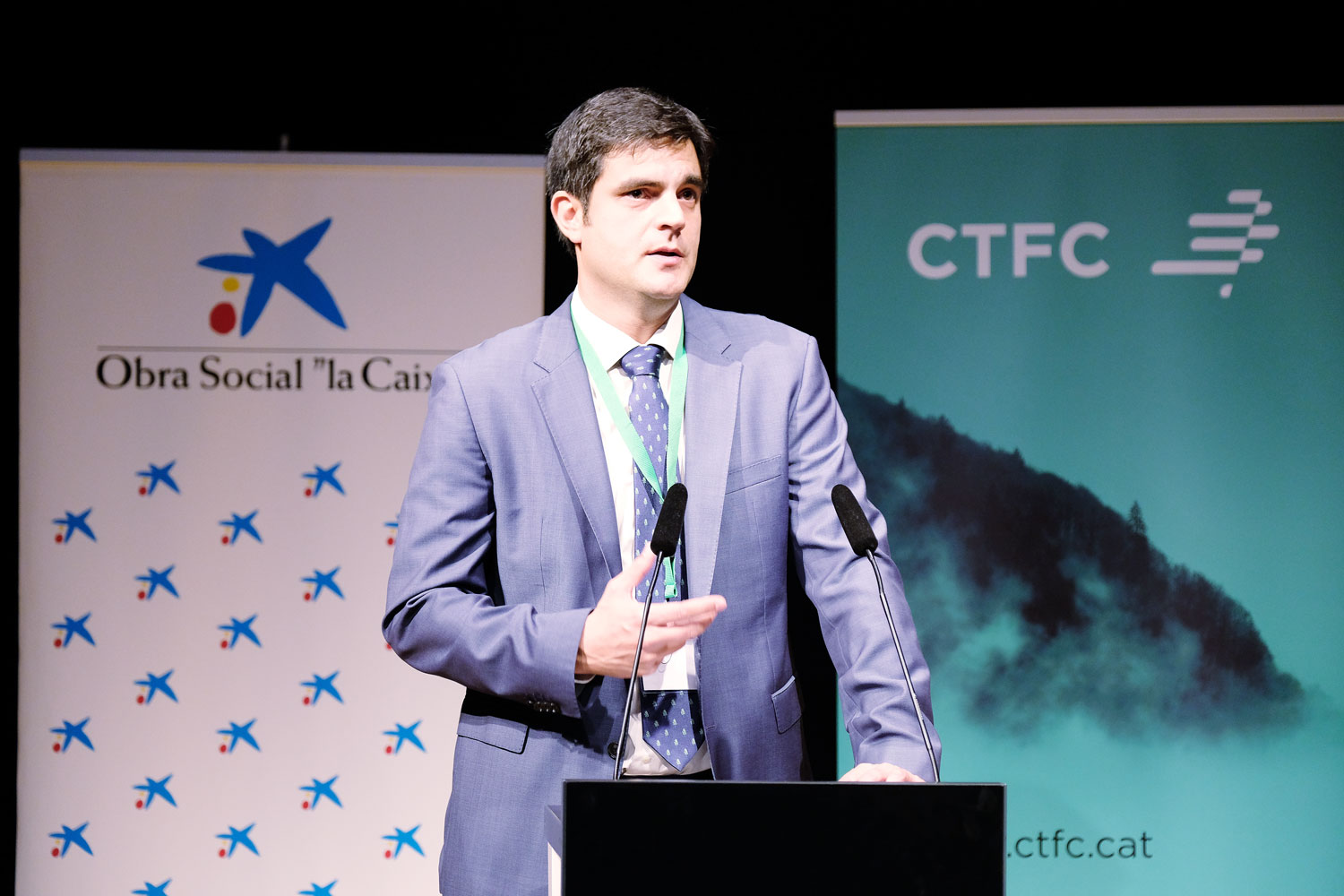
For this purpose, he highlighted three key elements:
Finally, he stressed the need of an adequate coordination between the Committee of the Regions and ERIAFF-forested regions networks for a good regional implementation of the Strategy.
Risto Poutiainen, Region Mayor of the Regional Council of North Karelia (Finland), presented the ‘Forested regions’ initiative, included in ERIAFF. This network promotes collaboration between forested regions within Europe for the implementation of various action plans, among others, to promote the bioeconomy (financial instruments, discussion forum, etc.).
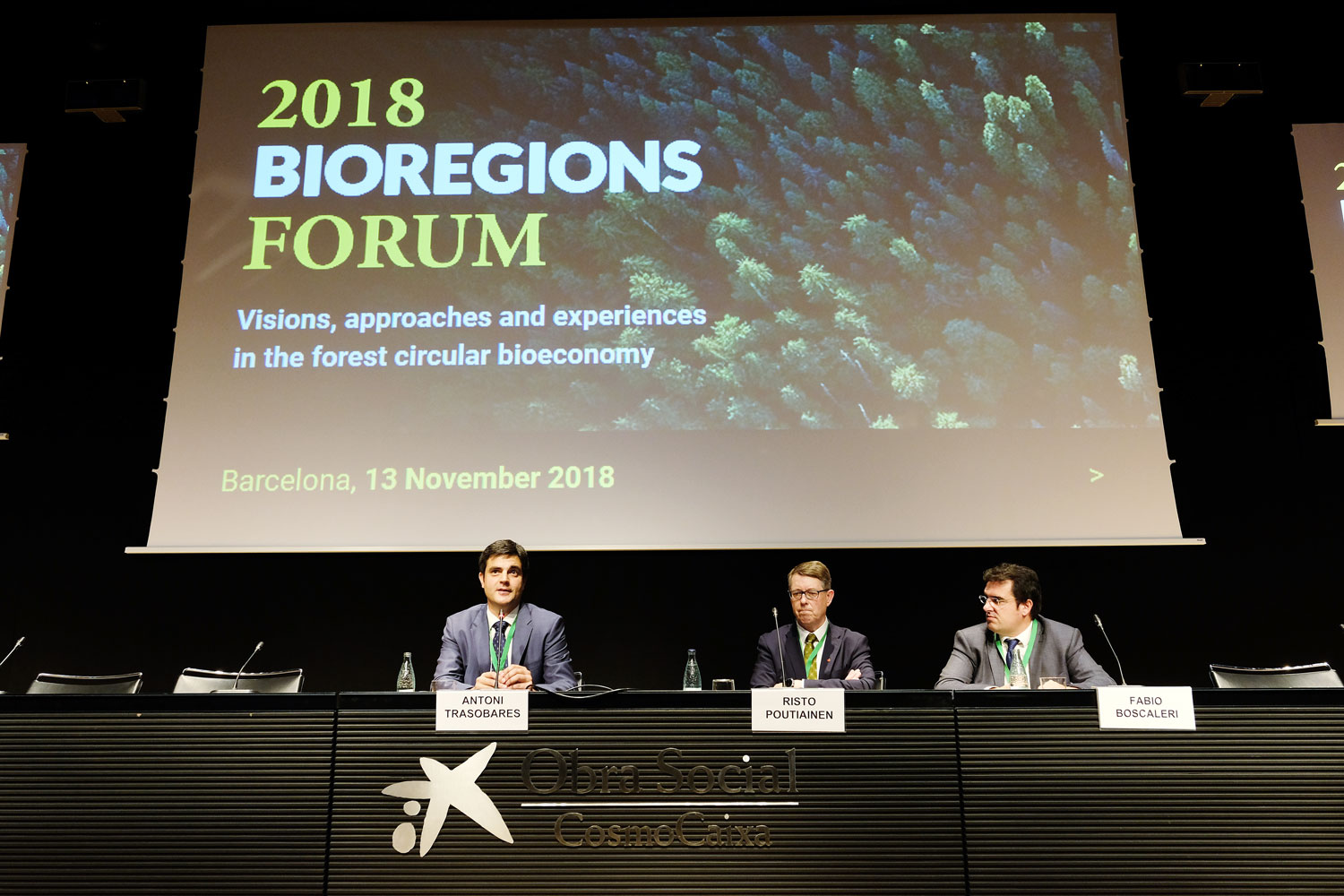
Fabio Boscaleri, policy advisor for the Tuscany Region Brussels liaison office, presented the ERIAFF project. He explained that there is currently a specific working approach on forests and bioeconomy. However, he considered there is still a long way to go to consolidate the joint work of the regions in this field. In this sense, the Committee of the Regions can play a key role as an instrument of dialogue with the European Commission. Finally, he called for participations in forums and to the next meeting that will be held in Florence.
Waldemar Kütt, head of F1 Bioeconomy Strategy Unit (D.G. Research and Innovation), defined the bioeconomy as an economy that uses renewable and biological resources, and based on the knowledge, it takes into account materials, energy, sub-products and wastes flows.
This Strategy wants to ameliorate the connection between environment, society and economy. In the context of a future scenario of higher demands for resources, securing the sustainability and production of services such as water, biodiversity and carbon fixation constitutes a great challenge
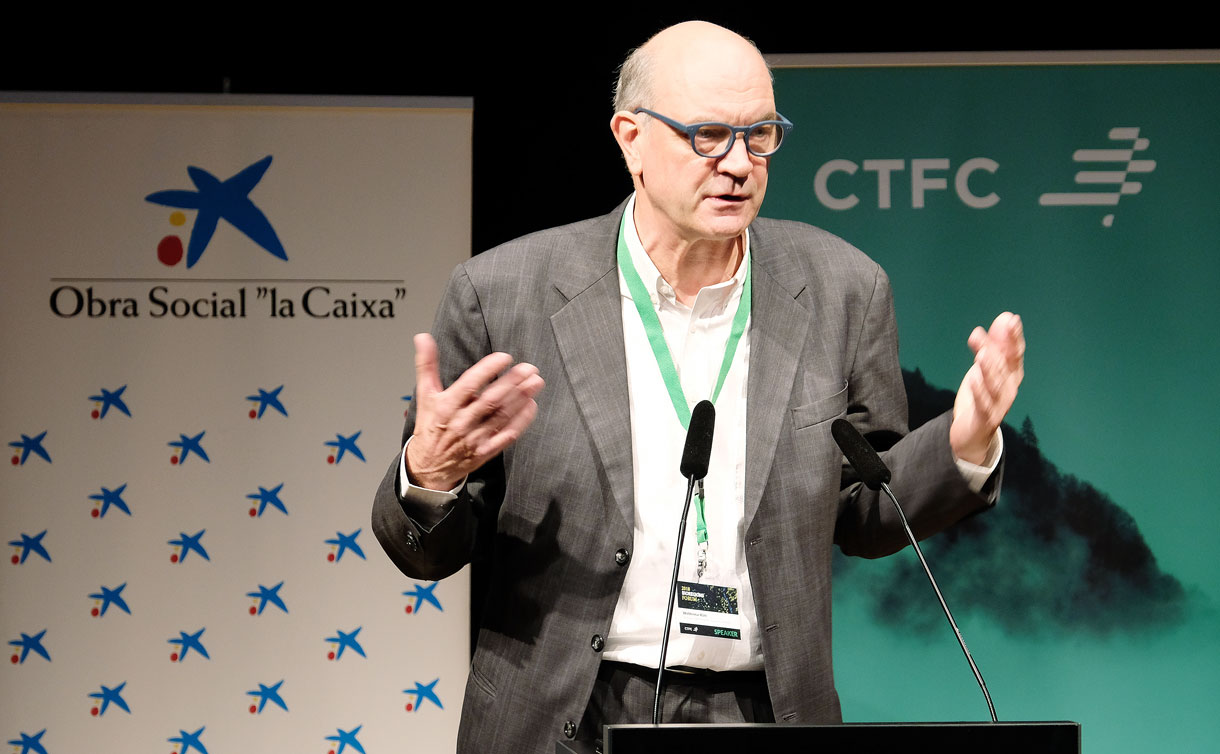
The objective of this new strategy is to ensure the coordination of sectorial policies. For this reason, circularity and intersectorial actions are crucial for its implementation (presentation).
Research is needed to guarantee the transition to this new model where food security is reconciled with sustainable use of resources and environment protection. To generate opportunities at a local scale, he proposed an action plan considering the following principles:
Felipe Ortega, deputy advisor at the European Investment Bank, presented investment opportunities for bioeconomy at regional level. The European Investment Bank has developed financial instruments to help the transition towards a circular economy and to respond to actual environmental challenges.
There are loan programs for small and medium-sized enterprises based on the use of renewable and natural resources. Various examples of projects co-financed by EIB and EAFRD/ERDF (presentation) were presented; e.g. projects on preventive silviculture in Castilla y León or innovation initiatives in Portuguese cork industry. This last project was developed with AMORIM, one of the business cases of reference of Session 1.
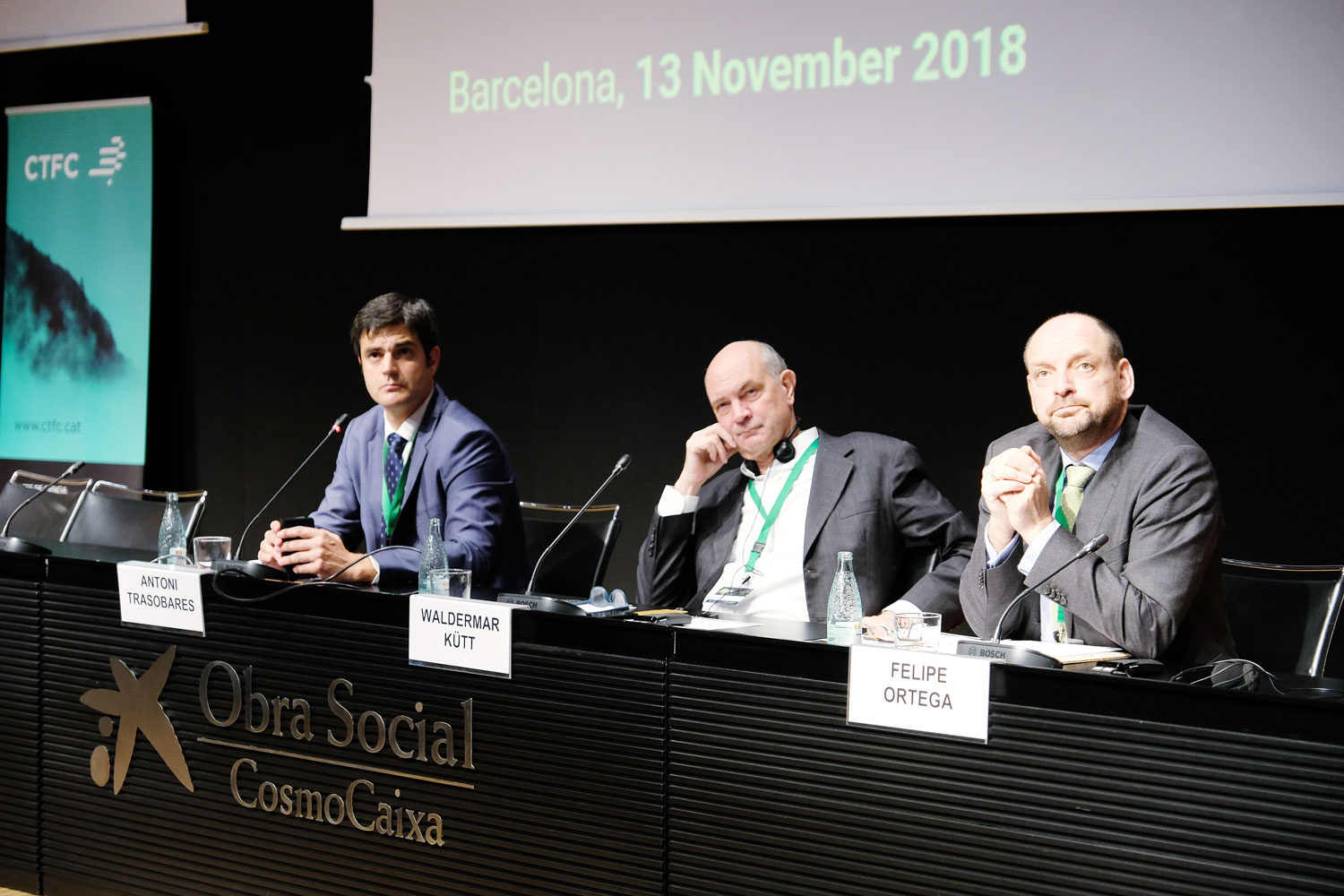
Afterwards, an open debate with the public was initiated and the following questions were addressed:
1. How can we increase awareness and dissemination to actual society?
Waldemar Kütt, admitted that it is not easy to communicate the concept of bioeconomy. He mentioned initiatives that are being implemented in cities to inform the citizens about bioeconomy and its applications. Moreover, the Directorate General of Agriculture detected new needs in the formation of future university programs in the field of agriculture and forest sciences.
2. In the context of an increase of the uncertainty in the agriculture and forestry sector due to climate change, how the perception of risk can be minimized to attract more bank investments?
Felipe Ortega, pointed out the long experience of some banks in supporting agricultural initiatives and insurances; and its capacity to accept projects with a high risk rate.
The Chairman of the session, Andreu Mas-Colell, professor at Pompeu Fabra University and former Minister of Economy and Knowledge of the Government of Catalonia, introduced the session highlighting among other aspects the importance of technology and research as tools to increase the potentiality of bioeconomy strategies (introductory speech). Afterwards, three successful business cases from Northern, Central and Southern Europe, and their impact at regional level, were presented.
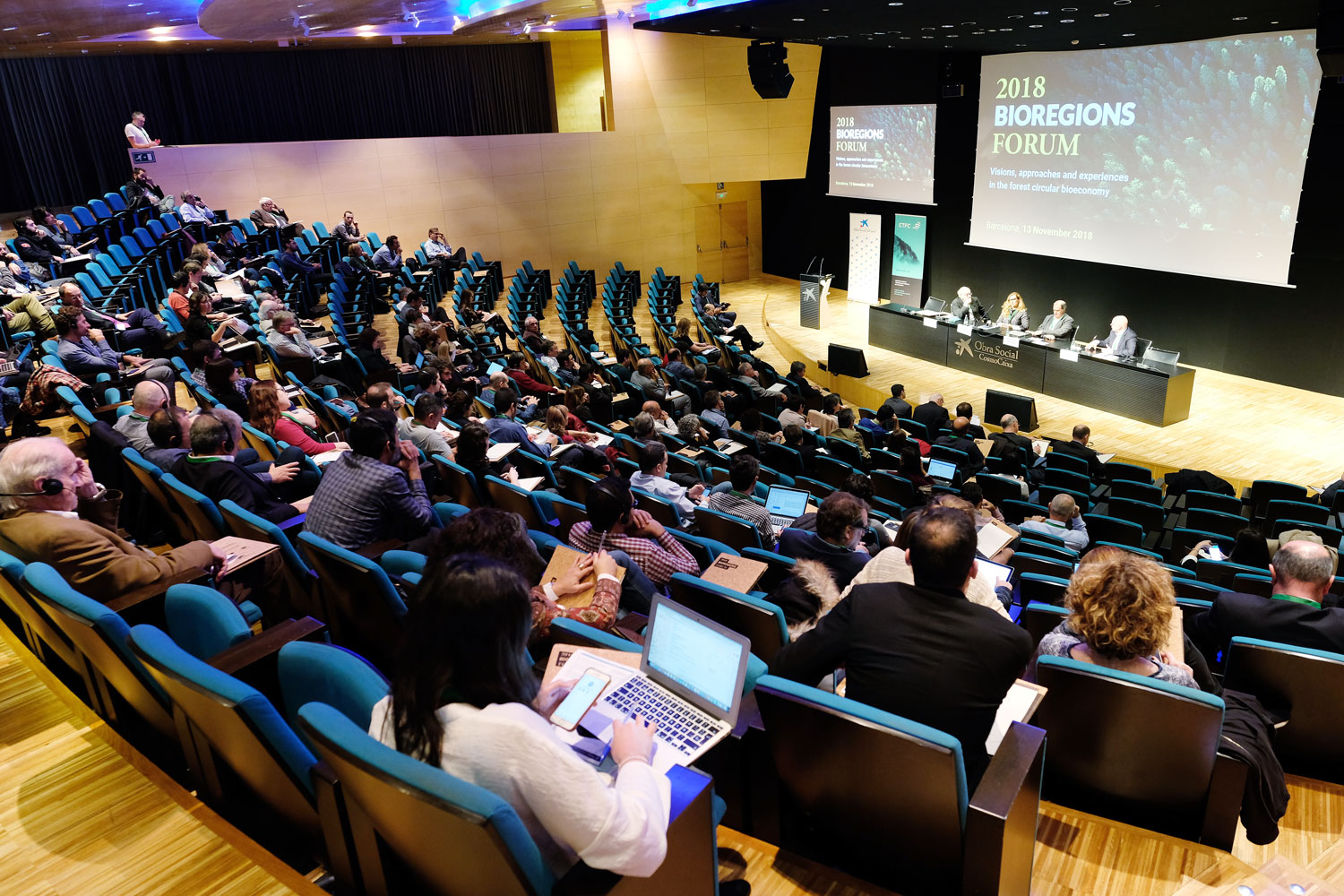
Visnja Koscak, representative of the Wood Cluster from Styria region (Austria), explained the importance of bioeconomy and the forest sector in this region, where they are a source of wealth and employment really important, especially in more rural areas where property are mostly privates. She presented four key elements to ensure the success of implementing bioeconomy initiatives (presentation):
Francisco Carvalho, director of Amorim Group – leading cork company in the world, presented an optimistic view of the production of cork products and highlighted the fact that exportations reached in 2017 their highest record (with a production of 25 million of corks per day). He mentioned that consumers (including restaurant industry) prefer cork to other non-bio products as plastics, and that future demands tend to converge with the production. Moreover, he underlined the versatility of cork that can be used due to its properties for a huge variety of products: from isolation for spacecraft and football fields to surfboards. Finally, he underlined the impact of Amorim’s activity in Catalonia and the importance of making industrial investments that enhance local cork production (presentation).
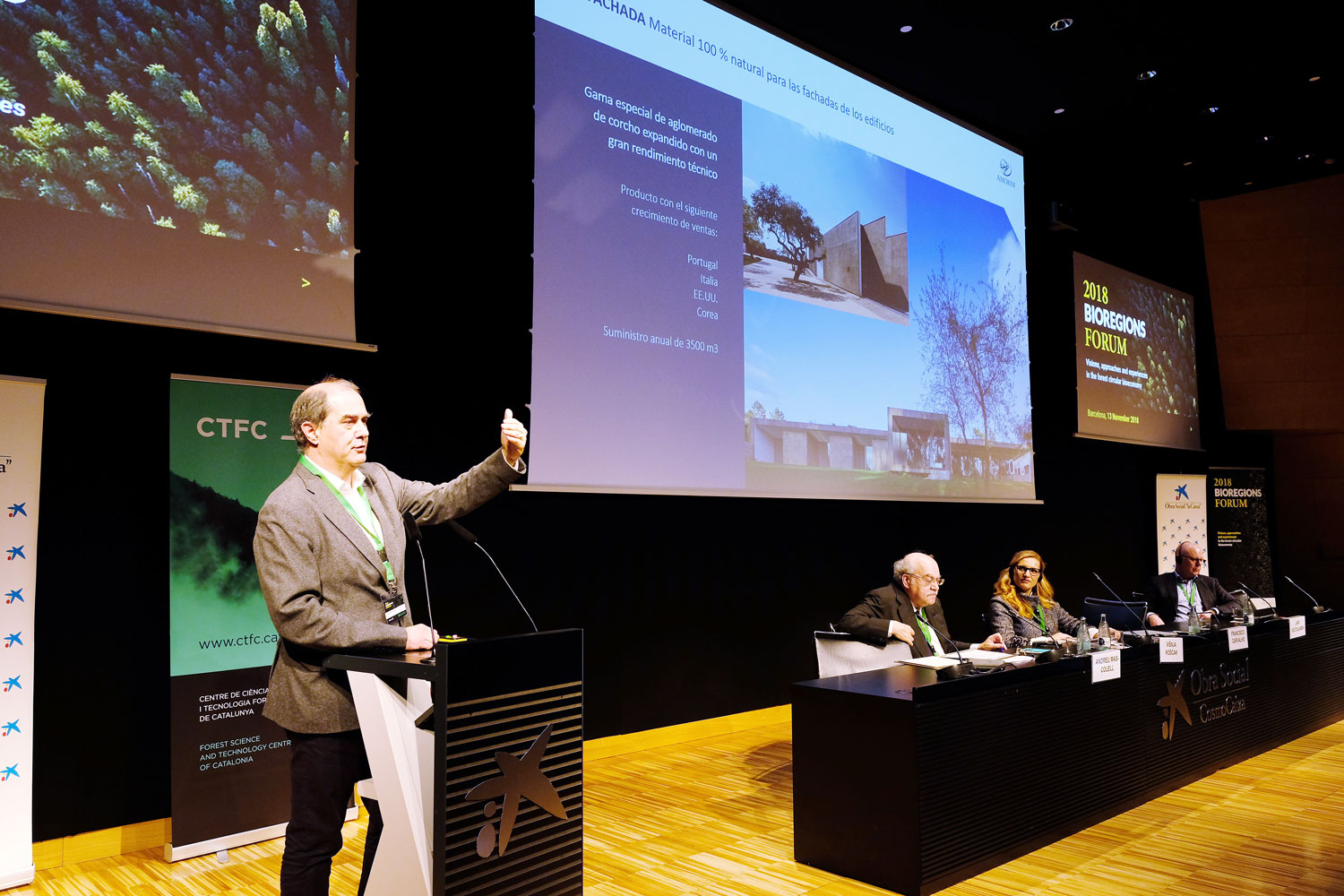
Jari Voutilainen, senior vice-president of Metsä Group – a large wood, fibre and board industrial cooperative from Finland – presented initiatives developed by the Metsä Group to go beyond the traditional forest industry and to find new uses to wood fibre that increased its add value. He explained different investments done by the group to make bioeconomy a reality and to strengthen wood industry in Finland and Estonia. Moreover, he mentioned the role of some spin-offs such as Metsä spring created to test innovations and demonstrate how generated ideas can result in competitive businesses.
DEBATE SESSION 1Q1: How to address innovation in the development of bioeconomy?
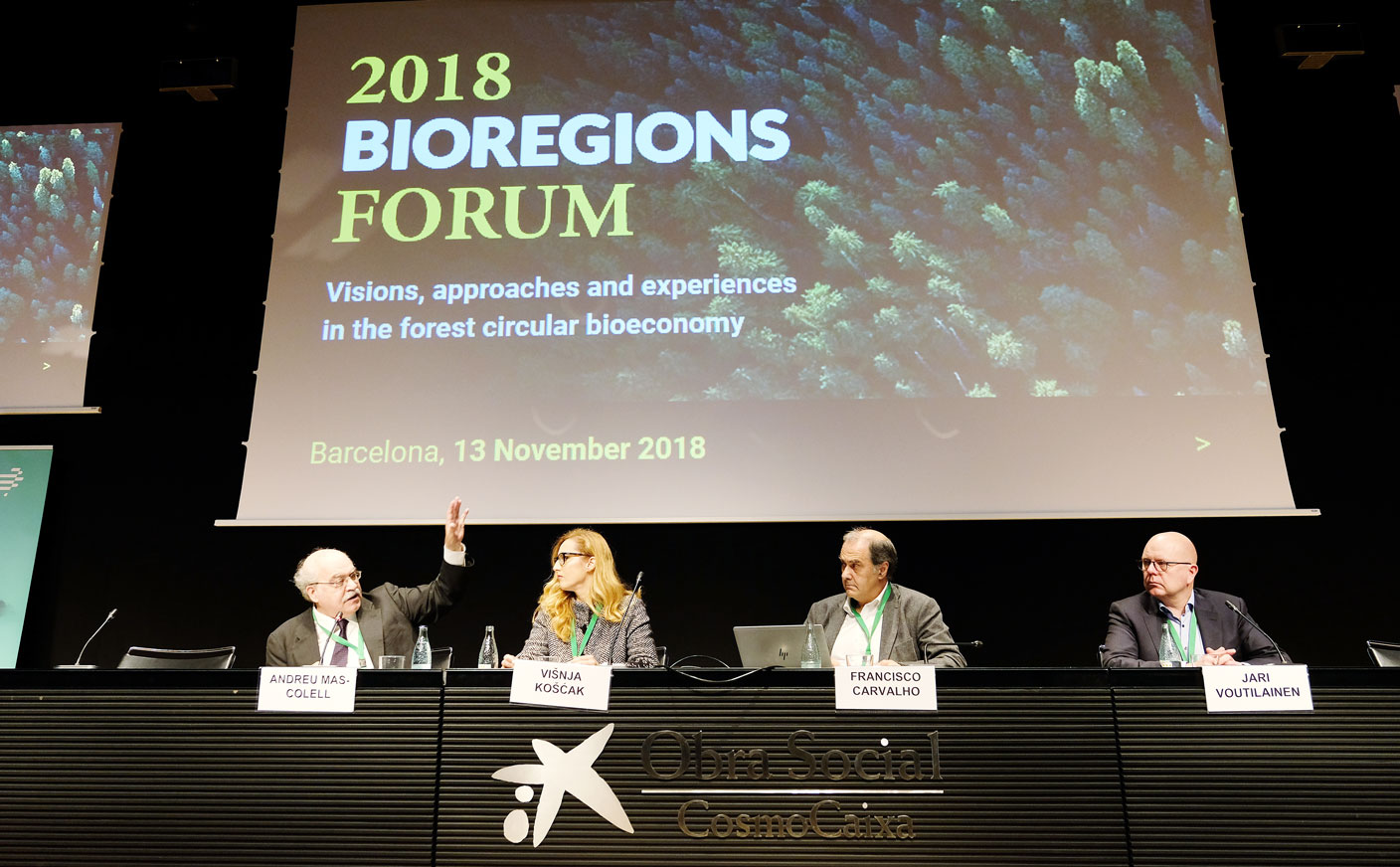
Q2: What specific demands would you make to politicians to help you developing your business ideas?
Q3: Which proportion of biological and renewable resources comes from Europe in your enterprise?
Q4: How to encourage management in the Catalan forest sector in a context where 70% of the forest is abandoned?
Q5: Which proportion of the product is exported?
Q6: Is the size of the enterprise important in your business? What is the return on investments? Are your enterprises making your region more attractive to other investors?
Q7: How would you evaluate the market for bioeconomy?
Christian Patermann, former Director of EC DG Research programs and member of the German Bioeconomy Council, emphasized the need to associate bioeconomy with mechanisms that measure their impact and facilitate the involvement of all the agents involved. For this reason, the re-valorisation of local resources is essential regarding social needs. He also claimed that ecosystem services should be considered seriously in the implementation of bioeconomy. This is a new field, because there are no methodologies, based on scientific evidence, which integrate ecosystem services and biodiversity into bioeconomy, such as the benefits of biodiversity in agriculture.
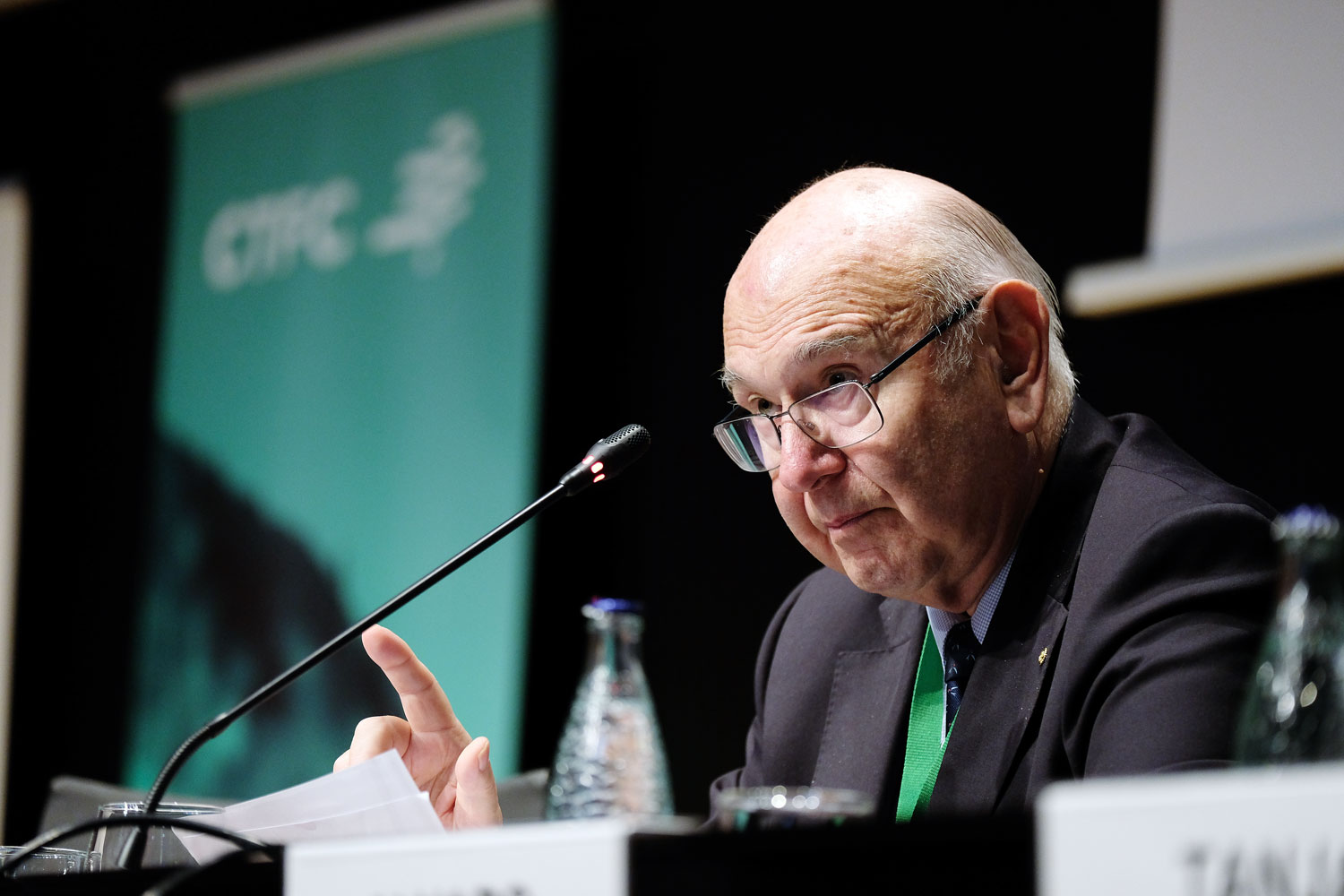
María Gafo, Deputy Head of Unit at EU DG Agriculture and Rural Development, presented how bioeconomy will be included in the Community Agrarian Policy 2021-2027 (presentation). For the first time, the rural development fund explicitly includes mechanisms to strengthen bioeconomy and sustainable development. This new funding should help farmers and foresters to establish new value chains for raw materials, ecotourism and innovation.
In addition, she presented other specific funds for research and innovation (Horizon Europe - 10 billion euros). Eight different types of interventions have been defined to provide financial support to different regional goals and needs, being mandatory in all of them to invest at least 30% of the budget in environmental objectives and adaptation to climate change. All these interventions should take into account the socioeconomic challenges faced by rural areas.
Marco Marchetti, vice-rector for Research at the University of Molise Studies (Italy), brought the attention to ecosystem services and biodiversity in Europe, where there is a long history of co-evolution between man and nature. Within the framework of the Climate Change Strategy, he claimed for the need of adaptive forest management to be able to respond to current times of accelerated changes on the demands and needs of the society, among others. He also mentioned that although the discourse of sustainability remains valid, this is not enough. He remarked considering seriously responsibilities and ecological limits in which the economic activity is developed. In this context, forests are considered to play a very important role: on a global scale, reforestation to absorb atmospheric carbon; and at regional scale, the cascade use of forest products to increase the value chain. He also pointed the need to avoid the intensification of the forestry activity and to favour the resilience of the ecosystems. A critical point to ensure to minimise the risk of biodiversity losses is to define methodologies that reach compromises between the different possible ecosystem services in such a diverse landscape as the European (presentation).
Finally, a panel was set in order to illustrate experiences in the implementation of the bioeconomy at regional level:
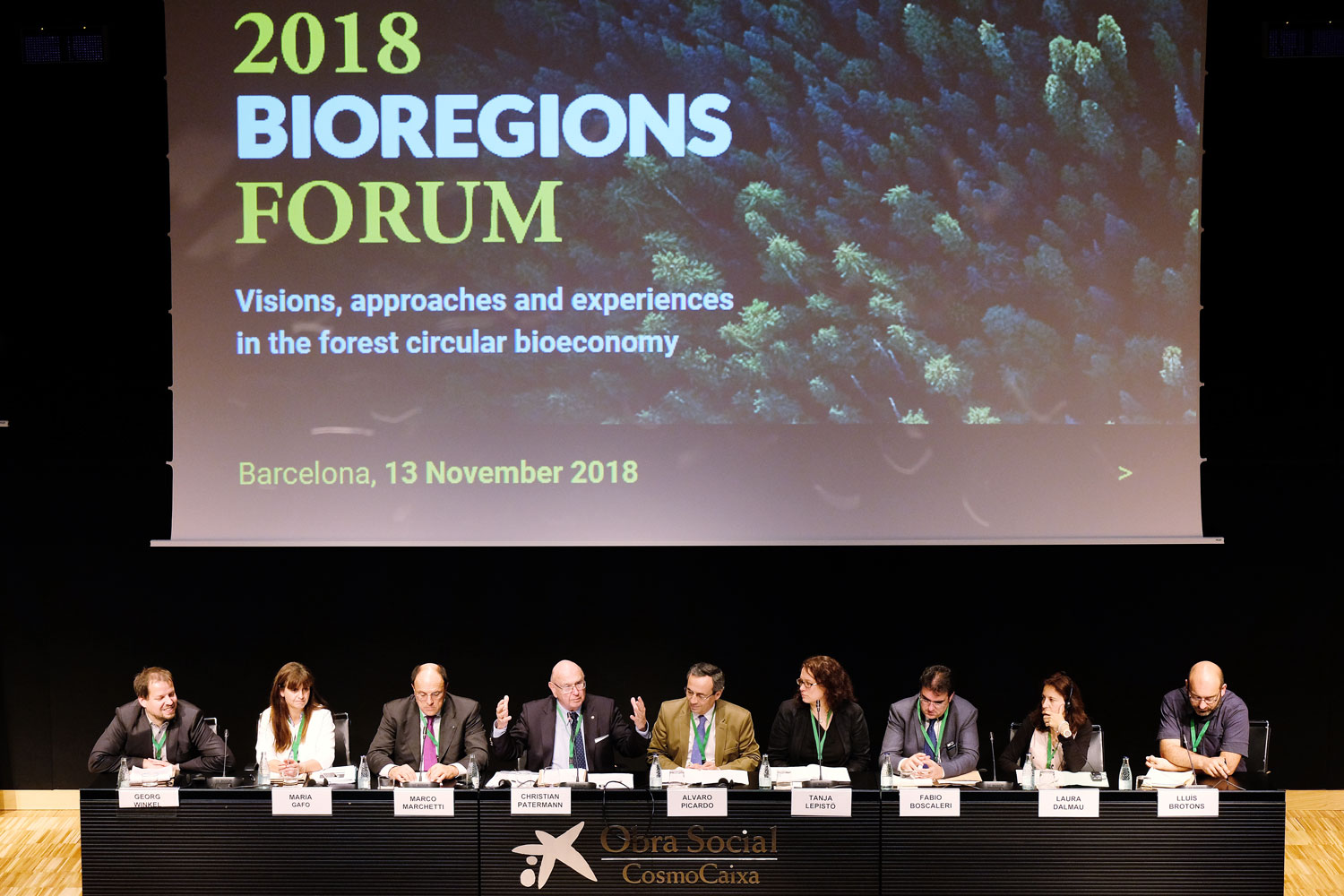
Tanja Lepistö gave testimony of the priorities and challenges when implementing bioeconomy in Lapland (Finland), where half of it comes directly from forestry. In this region, there is a commitment to activate forest management and to develop an industrial cluster based on the circular economy. In this context, the mediation of different interests in the use of forest (production, environmental certification and ecotourism) is very important.
Alvaro Picardo explained the reality of rural areas in Castilla y León, affected by a large rural depopulation and where the forestry sector has never been relevant in the economy. He proposed a model based on sustainable forest management and a paradigm shift towards more extensive livestock farming. This model should be different from the Northern and Central Europe models. In a Mediterranean context, it is necessary to promote forestry policies where this turn to bioeconomy could be accommodated.
Fabio Boscaleri presented the experience of the region of Tuscany (Italy), better known for its art and tourism, than for its bioeconomy, despite having more than 45% of forests. These forests are strongly regulated in order to ensure the protection of the cultural landscape. In this context, there is no clear vision of what bioeconomy is, although circularity is view as an opportunity. Currently in Tuscany, the bioeconomy is not seen as a necessity and the link between the needs and the perceived demands is still lacking.
Laura Dalmau presented different mechanisms of rural development in Catalonia, where there is a commitment to boost bioeconomy circular strategies; as for instance, the Rural Development Programme. She highlighted the importance of promoting sources of renewable energy and of climate change mitigation on farms. She also mentioned that operational groups and LEADER projects do also play an important role in implementing innovations, mitigation plans and promoting sustainable forest management.
Lluís Brotons presented the Mediterranean forest context, characterized by a great aesthetic-cultural value and a high vulnerability to natural risks, such as fires and plagues. He said it is necessary to look for alternatives to promote the economy in rural areas meanwhile to enable giving solutions to these global environmental risks. Finally, he reflected on the need for a change of values and to restore the values of the territory.
Georg Winkel enumerated some key messages extracted from a recent study (EFI), which examines the relationship between bioeconomy and ecosystem services:
Q1. How to pay for social inclusion when competitiveness is valued? Are there studies about what forest workers earn?
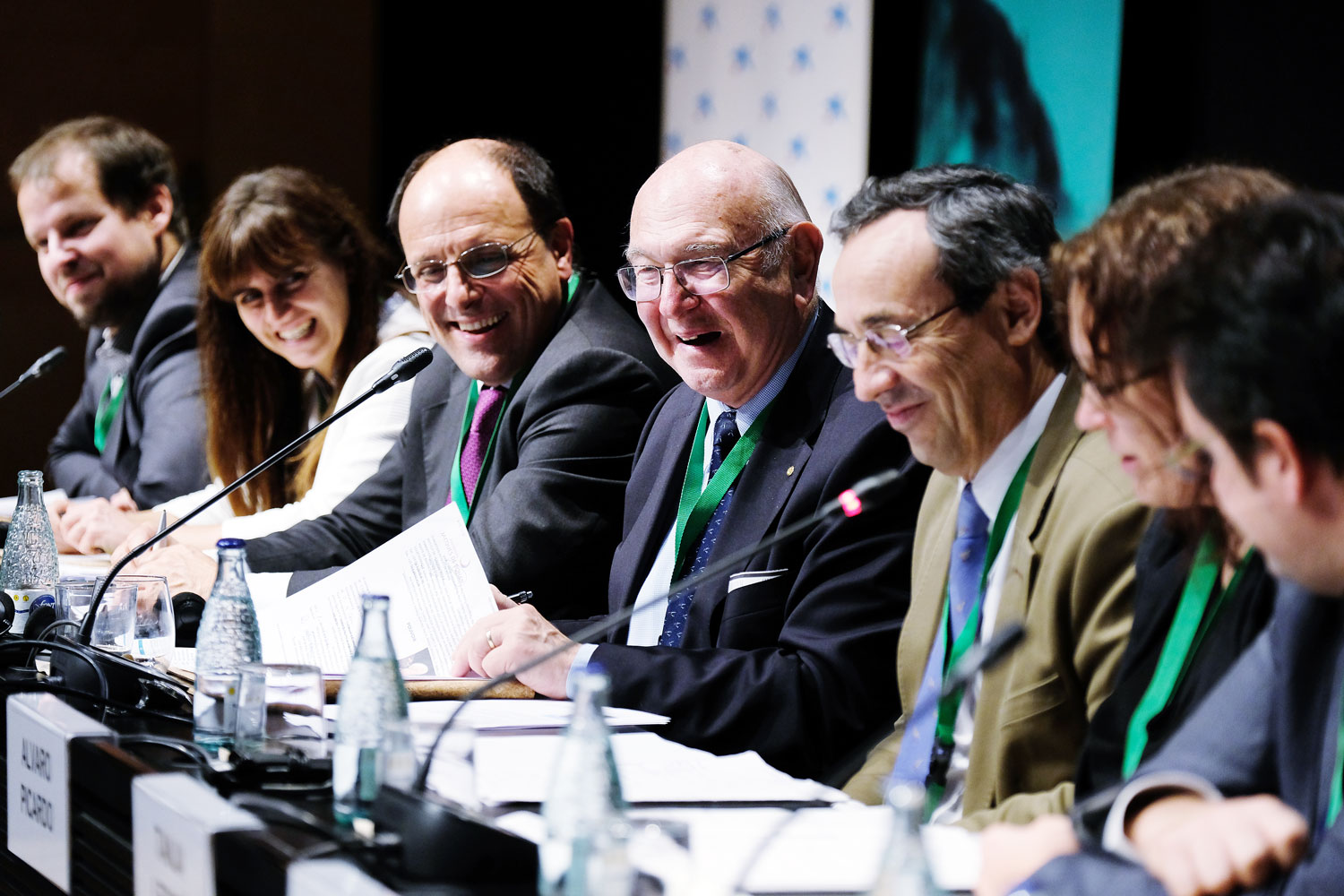
Q2: What is the representation of city councils in this vision of bioeconomy?
Chairman Lauri Hetemäki, Assistant Director of the European Forest Institute, presented this session.
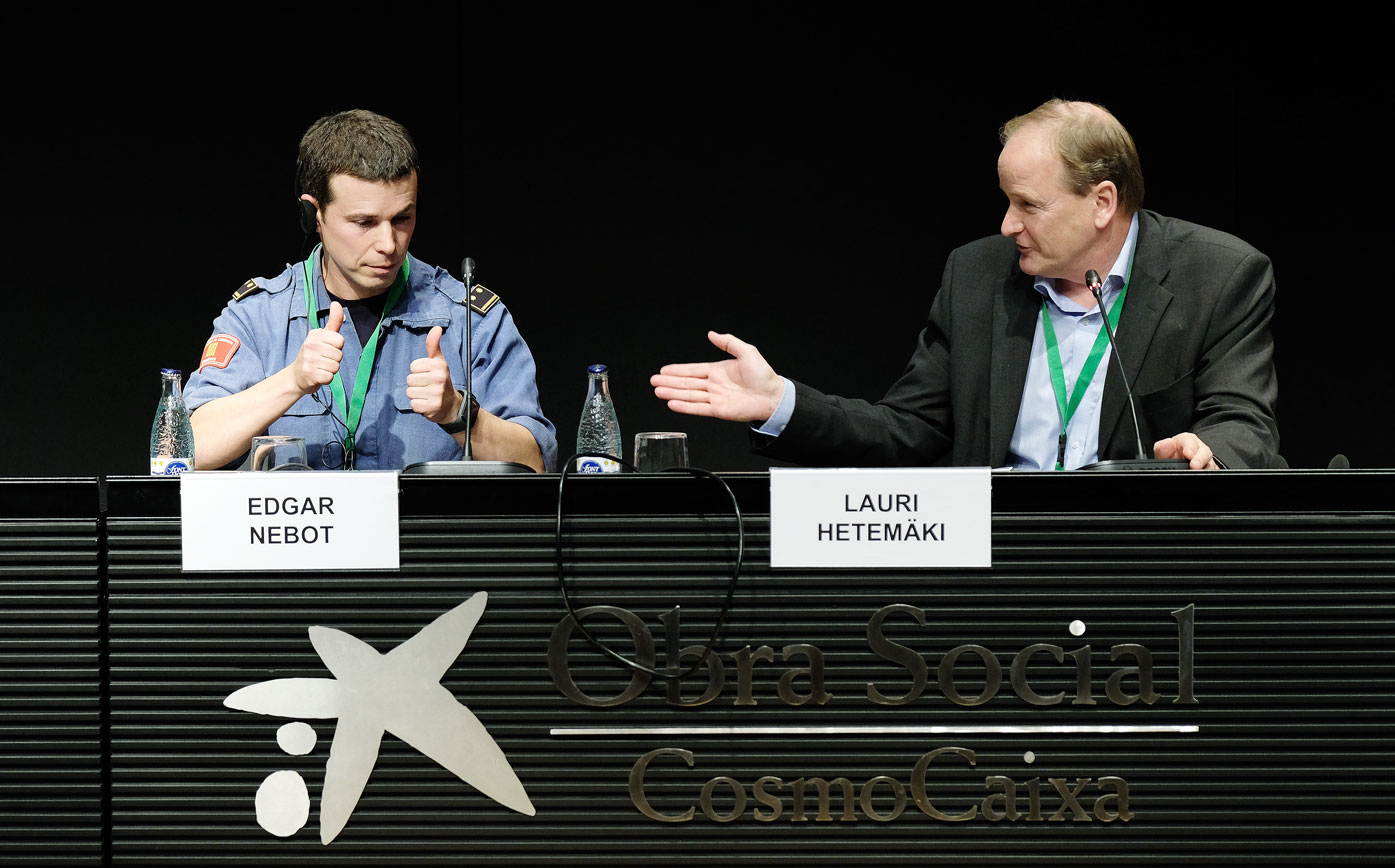
Edgar Nebot, analyst at GRAF-Bombers, presented the future scenario of forest fires, with new types of fire increasing the uncertainty and misadjusting extinction strategies. In response to this challenge, he proposed operational action groups that help to keep forests with discontinuity of fuel (called "the fire herds"). The inclusion of this practice might be considered in a bioeconomy circular strategy. This is a project where sheep are used for fuel management in coordination with firefighters, and where added value is generated to the consumption of local meat products. In addition, he proposed changes in the regulations and in the sectoral planning that will allow defining the priorities and democratizing the decision-making in the extinction of forest fires (presentation).
Lauri Hetemäki emphasized the importance of the circularity of bioeconomy in Europe, as a tool to finish with the fossil-based economy and the linear productive processes that arise from it. Two vectors of this transition would be the global objectives of sustainable development and the increase in the demand for high quality products, such as wood construction with CLT. He highlighted the lack of market and value chains researches to determine the most necessary interventions to maximize the added value.
Although perspectives for the future are favourable, he mentioned that the bioeconomy can only be successful improving ecosystem and cultural services alongside. This dimension is essential for effective communication about bioeconomy to European citizens. That is why it is important to make sustainable the bioeconomy and find a balance between the different social needs (presentation).
Antoni Trasobares summarized the most important messages of the previous sessions, and introduced the following Ministers from regional governments of Basque Country, Sardinia and Catalonia.
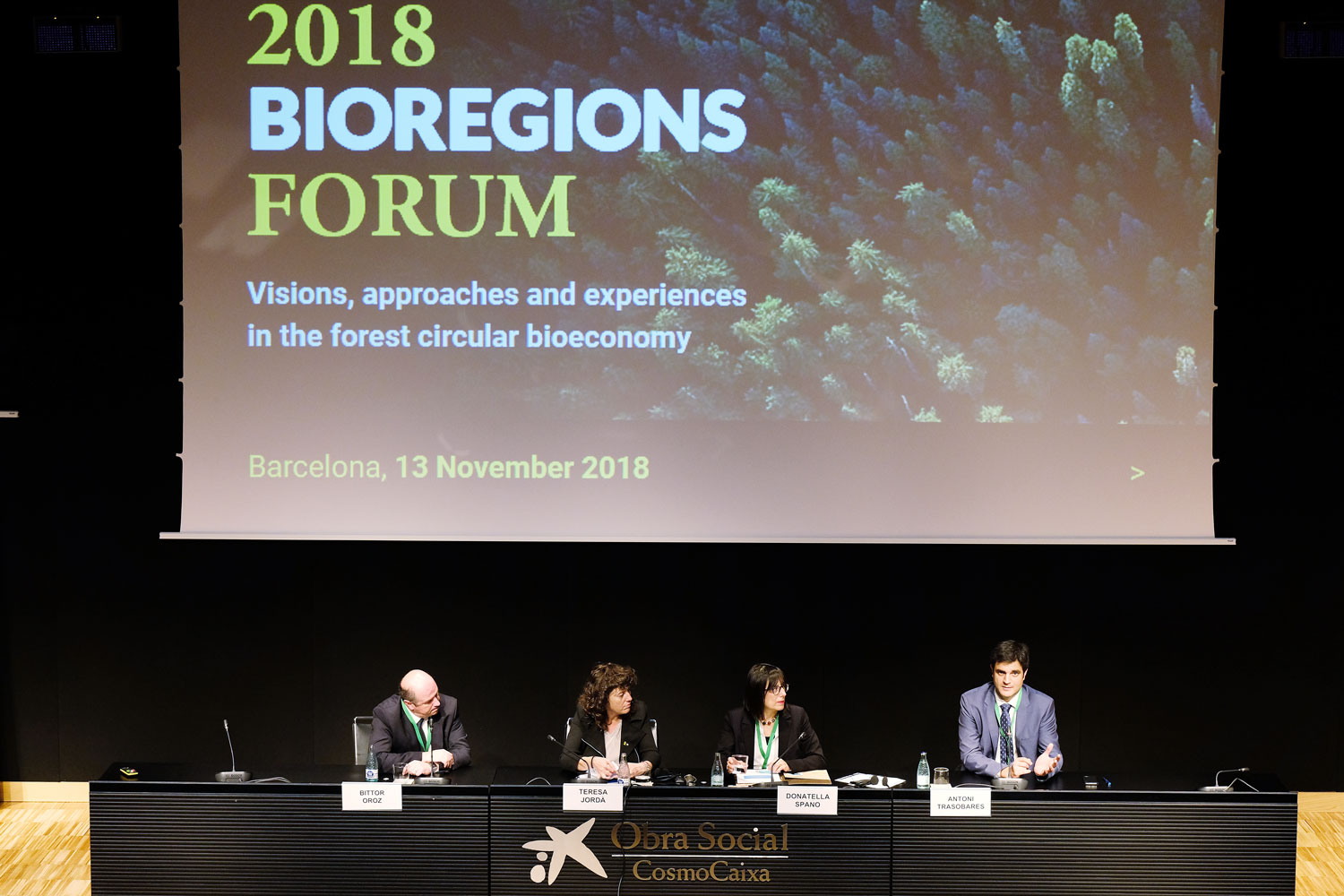
Bittor Oroz, Deputy Minister of Agriculture, Fisheries and Food Policy, Basque Government, expressed the urgent need for a transition to a new model of entrepreneurship based on bioeconomy, closer to the citizen and with the collaboration of other economic and energy sectors. He called for the coordination between agroforestry, research and energy sectors in order to structure the implementation of concrete projects that will generate economic activity and demonstrate that the bioeconomy is a real and viable fact for the territory.
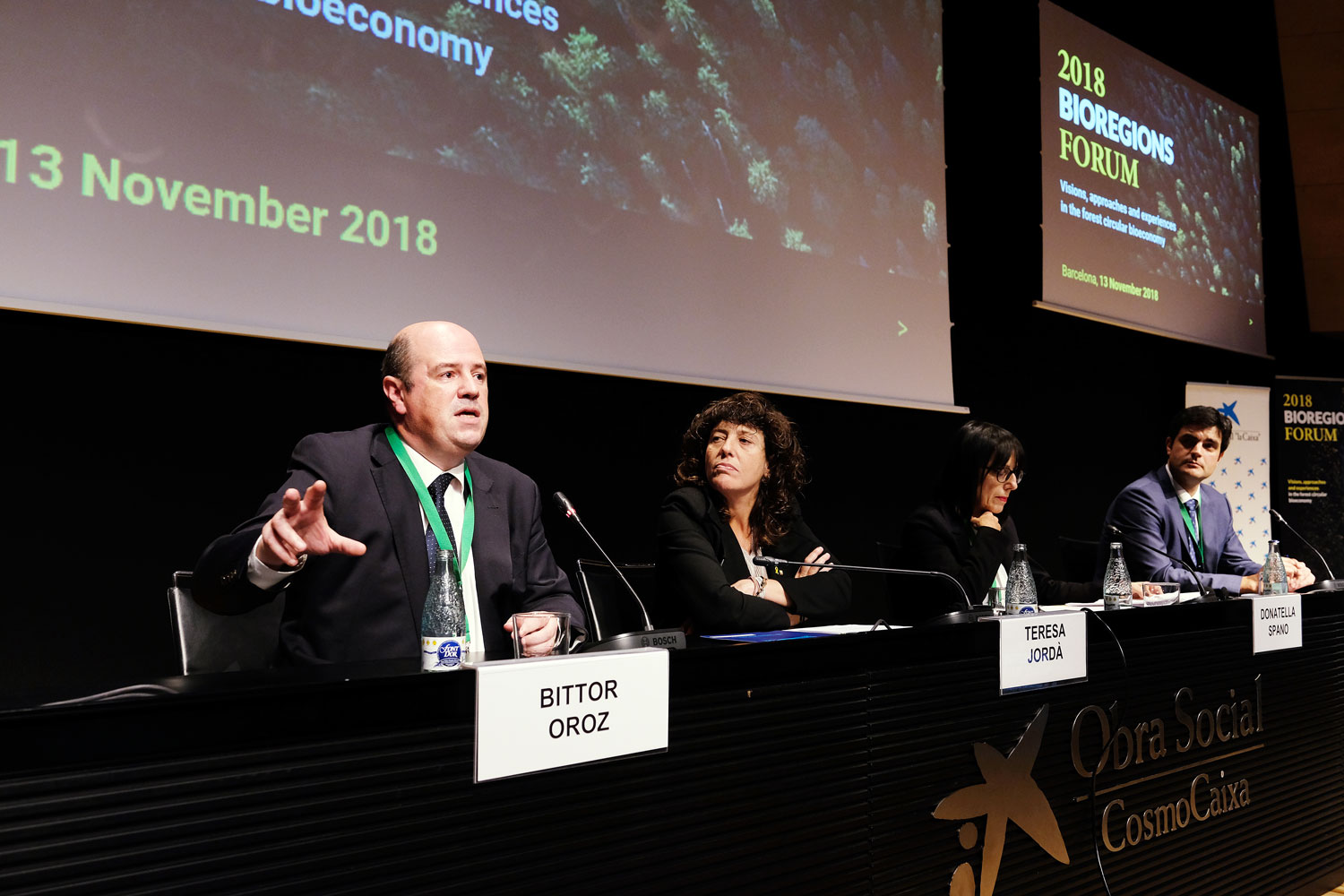
Donnatella Spano, Regional Minister for the Environment Protection of Sardinia, praised the forum as an opportunity to share the best practices and identify the knowledge needed to promote the bioeconomy. She highlighted the importance to communicate and present the bioeconomy to the society as a generator of high quality products and alternatives to other non-sustainable materials.
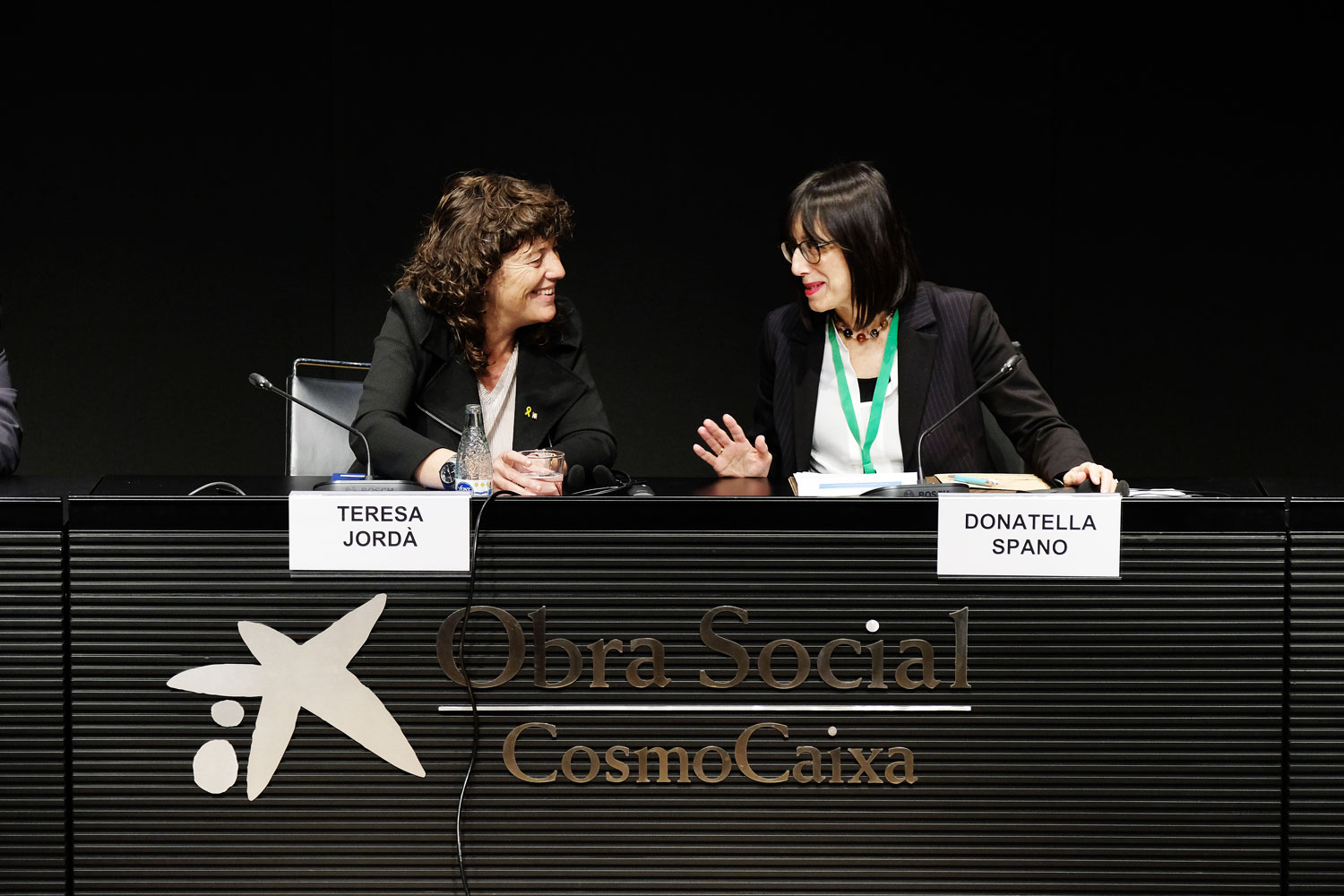
Teresa Jordà, Minister for Agriculture, Livestock, Fisheries and Food of the Government of Catalonia, expressed the hope that bioeconomy would become a real tool of transformation of the production model of Catalonia, and therefore highlighted the need to make bioeconomy sustainable and circular. The mobilization of people of the territory is fundamental for this transition of production model. That is why she foresaw bioeconomy as a strategy co-build by all the actors involved, supported by new regulations and resource provision to allow its implementation, and a constant evaluation to monitor progress.
